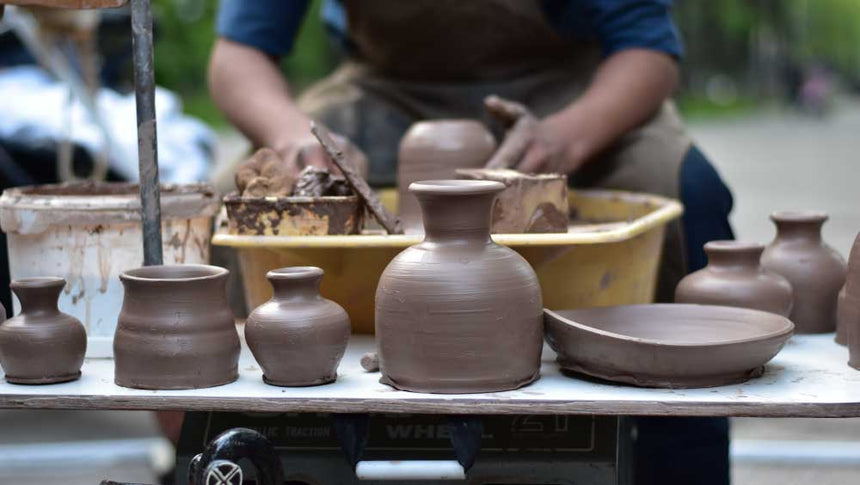From Clay to Art: Understanding the Pottery-Making Process
Welcome to Am I Addicted’s pottery studio blog, where we delve into the captivating world of pottery making! In this article, we will take you on a journey through the intricate process of creating beautiful pottery pieces. From shaping clay to firing techniques, join us as we explore the artistry and craft behind this age-old practice.
The Foundation: Choosing the Right Clay
Pottery begins with selecting the right type of clay. Various clays possess different properties, each suited to specific pottery techniques. For example, earthenware clay is ideal for hand-building and pottery wheel throwing, while porcelain clay is renowned for its delicate translucency. Understanding the characteristics of different clay types is crucial for achieving the desired results.
Wedging: Preparing the Clay for Creation
Once the clay is selected, it undergoes a process called wedging. Wedging involves kneading and compressing the clay to remove air bubbles and ensure its consistency. This essential step improves the workability of the clay, making it easier to shape and manipulate.
Hand-Building: Sculpting Artistry with Hands
Hand-building is one of the oldest pottery techniques, allowing artists to create unique pieces using their hands and basic tools. This technique involves pinching, coiling, and slab construction to shape the clay into bowls, vases, and other forms. Hand-building offers endless creative possibilities, with artists using their skill and imagination to bring their designs to life.
Pottery Wheel Throwing: The Art of Symmetry
Pottery wheel throwing is a mesmerizing technique that dates back centuries. It involves spinning the clay on a pottery wheel while using hands and tools to shape it. This technique requires practice and precision to achieve symmetrical forms. As the wheel spins, the potter skillfully applies pressure and adjusts the clay's shape, transforming it into bowls, cups, and plates.
Drying and Trimming: Patience and Attention to Detail
Once the pottery piece is shaped, it must be carefully dried to remove excess moisture. This drying process prevents cracking during firing. After the initial drying stage, the potter trims the piece, refining its shape and adding decorative details. Patience and attention to detail are crucial during this phase to ensure the final piece is well-balanced and aesthetically pleasing.
Glazing: Unleashing Colors and Textures
Glazing is the process of applying a layer of liquid glass, known as glaze, onto the pottery piece. Glazes add colors, textures, and a protective layer to the piece. Potters can experiment with a vast array of glazes, ranging from glossy to matte finishes, to achieve their desired effect. The glazing process is as much a science as it is an art, requiring precise application and an understanding of firing temperatures.
Firing: Transforming Clay into Ceramic
Firing is the final stage in pottery making, where the clay is transformed into ceramic. Pottery is typically fired twice, first in a bisque firing and then in a glaze firing. The bisque firing removes any remaining moisture and strengthens the piece. Once the bisque firing is complete, the potter applies glaze and proceeds to the glaze firing, which fuses the glaze onto the ceramic body, resulting in a durable and beautifully finished piece.
Understanding the pottery-making process is like uncovering the hidden secrets behind exquisite ceramic art. From the selection of clay to the final firing, each step requires skill, patience, and a deep appreciation for the art form. Whether it's the elegant curves of a wheel-thrown vase or the intricate details of a hand-built sculpture, pottery truly embodies the harmony between human creativity and the transformative power of clay. Join us in our pottery studio at Orchard Central as we continue to explore this ancient craft and create timeless pieces that reflect the beauty of human expression.


